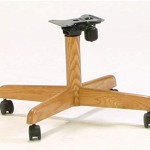What Grit Whetstone To Sharpen Kitchen Knives
Maintaining sharp kitchen knives is crucial for efficient and safe food preparation. A dull knife requires more force, increasing the risk of slipping and causing injury. Conversely, a sharp knife glides effortlessly through ingredients, making cooking faster and more enjoyable. One of the most effective methods for achieving and maintaining this sharpness is by using a whetstone, also known as a sharpening stone or water stone. However, selecting the appropriate grit whetstone is essential for optimal results. Grit refers to the abrasive particle size on the stone, with lower numbers indicating coarser stones and higher numbers indicating finer stones. The selection of the appropriate grit is dependent on the condition of the knife and desired level of sharpness.
Understanding the purpose of different grit levels is paramount to achieving a keen edge. Each grit range serves a distinct function in the sharpening process, from repairing damaged edges to refining and polishing them. Using the wrong grit can damage the blade or prevent it from reaching its potential sharpness. Therefore, a basic understanding of the different grit levels is crucial for anyone looking to sharpen their kitchen knives with a whetstone. The following sections will describe the different grit levels and their roles.
Coarse Grit Stones (120-400 Grit): Repairing Damage and Shaping the Edge
Coarse grit whetstones, ranging from 120 to 400 grit, are designed for the most demanding tasks in knife sharpening. These stones are essential for repairing significant damage to the blade, such as chips, nicks, or a severely dulled edge. The aggressive abrasive action of coarse grits allows them to quickly remove material from the blade, reshaping the edge and establishing a new bevel angle. This is particularly important for knives that have been neglected or used improperly, resulting in substantial damage.
When using a coarse grit stone, it is crucial to maintain a consistent angle and apply moderate pressure. The goal is to remove enough material to eliminate the damage and create a uniform bevel along the entire length of the blade. It is important to note that coarse grit stones leave a very rough finish on the blade, which is acceptable at this stage of the sharpening process. The roughness will be refined in subsequent sharpening steps using finer grit stones. These stones are typically not used on a regular basis for knife maintenance, but rather when a knife has been damaged or has not been sharpened for a long period of time.
A common misconception is that coarse grit stones are solely for heavily damaged knives. While they excel at this task, they can also be used to dramatically change the profile of a knife, such as creating a more acute (sharper) edge angle. However, this requires skill and patience, as removing a significant amount of material can alter the knife's performance. Beginners should exercise caution when using coarse grit stones and focus on repairing damage before attempting to modify the blade's overall shape. Safety precautions, such as using cut-resistant gloves, are also recommended.
Medium Grit Stones (600-1000 Grit): Establishing and Honing the Edge
Medium grit whetstones, typically ranging from 600 to 1000 grit, represent the workhorse of the knife sharpening process. These stones play a crucial role in refining the edge established by coarser grits and preparing the blade for final polishing. Medium grit stones remove the deep scratches left by coarser stones and create a smoother, more uniform bevel. This stage is essential for achieving a sharp and durable edge that will hold up to regular use.
The 600-1000 grit range is ideal for general-purpose sharpening and maintenance of kitchen knives. It strikes a balance between material removal and edge refinement, allowing users to sharpen knives effectively without being overly aggressive. This grit range is also suitable for touch-ups on knives that have become slightly dull after moderate use. Regular use of a medium grit stone can help prevent knives from becoming excessively dull, reducing the need for more aggressive sharpening with a coarse grit stone.
When using a medium grit stone, it is important to maintain a consistent angle and apply moderate pressure. The goal is to evenly remove material from the blade and create a smooth, consistent bevel along the entire edge. A good way to assess progress is to examine the blade under magnification. The scratches left by the previous grit should be gradually replaced by finer scratches from the medium grit stone. This indicates that the edge is being effectively refined and prepared for the next stage of sharpening.
Fine Grit Stones (3000+ Grit): Polishing and Refining the Edge for Maximum Sharpness
Fine grit whetstones, with a grit rating of 3000 or higher, are used for the final stages of knife sharpening. Their primary purpose is to polish and refine the edge to achieve maximum sharpness. These stones remove any remaining microscopic scratches from the previous sharpening steps and create a highly polished, almost mirror-like finish. This polished edge not only enhances the knife's cutting performance but also improves its resistance to corrosion and staining.
Fine grit stones are essential for achieving a truly professional-level edge on kitchen knives. They are used after the blade has been shaped and honed with coarser and medium grits. The process with a fine grit stone is much more delicate than the previous steps. Light pressure is essential, and the angle must be maintained with extreme precision. The goal is not to remove significant material but rather to refine the existing edge and create a highly polished surface.
Using a fine grit stone requires patience and attention to detail. It is important to regularly inspect the edge under good lighting to ensure that it is being evenly polished. Some users prefer to use a honing steel or strop after using a fine grit stone to further refine the edge and remove any microscopic burrs that may have formed. The final result is an incredibly sharp and smooth edge that can effortlessly slice through even the toughest ingredients.
The specific grit of the fine grit stone will depend on the user's preference and the desired level of sharpness. Stones with grits of 3000 to 6000 are commonly used for general-purpose sharpening, while stones with grits of 8000 or higher are used for achieving an exceptionally fine edge. These ultra-fine stones are often used by professional chefs and knife enthusiasts who demand the absolute best performance from their knives.
Ultimately, the selection of the appropriate grit whetstone for sharpening kitchen knives depends on the condition of the knife and the desired level of sharpness. Coarse grits are for repair, medium grits are for establishing the edge, and fine grits are for polishing. Using a combination of different grit stones will result in a sharper and more durable edge than using only one grit. Proper technique and patience are essential for achieving the best results.
The quality of the whetstone itself also plays a significant role in the sharpening process. High-quality stones are made from carefully selected abrasive materials and are precisely manufactured to ensure consistent grit distribution. A poorly made whetstone can be uneven or contain impurities that can damage the blade. Investing in reputable brands of whetstones is recommended to ensure optimal performance and longevity.
Furthermore, the type of whetstone affects sharpening. There are several materials used to manufacture whetstones, like ceramic, diamond, and Arkansas stones. Synthetic water stones offer a good balance of price and performance. Natural water stones are also available, but demand a higher price.
Choosing the right whetstone and learning how to use it effectively is an investment in the longevity and performance of kitchen knives. Sharpening with a whetstone is a skill that can be developed with practice and patience. With the right tools and techniques, anyone can achieve a professional-level edge on their kitchen knives and enjoy the benefits of sharp, safe, and efficient cutting tools.

Sharpening How Many Whetstones And What Diffe Grits Do I Need Seasoned Advice

Whetstone Knife Sharpener 1000 6000 Grit Gourmet Cook

Knife Sharpening Stone Doublesided Sharpener Fine Medium Grit Whetstone
:max_bytes(150000):strip_icc()/__opt__aboutcom__coeus__resources__content_migration__serious_eats__seriouseats.com__images__20100423-sharpening20-2004-aba6e6fa129844a7a106fa006eb98c3d.jpg?strip=all)
How To Sharpen A Knife With Whetstone

3000 8000 Grit Whetstone Seido Knives

Vogue Dual Grit Whetstone 120 240

Knife Sharpener Whetstone 1000 6000 3000 8000 Grit Sharpening Stone Kitchen Tool

1000 6000 Grit Whetstone Sharpening Stone Seido Knives

1000 6000 Dual Grit Whetstone Kit With Angle Guide Bamboo Case Senken Knives

Discover The Secret To Razor Sharp Blades Right Grit Whetstone
Related Posts








